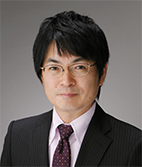A group of researchers in Japan who lost a paper earlier this spring in Science for misconduct have notched two more retractions, bringing their total to three.
As we reported in April, Science pulled a 2020 article led by Masaya Sawamura, of Hokkaido University, in Sapporo, saying the authors discovered:
that the reported enantioselective gamma-selective C–H borylation of N,N-dibenzylhexamide is not reproducible and that many of the nuclear magnetic resonance (NMR) spectra were manipulated.
Now, the Journal of the American Chemical Society is retracting two more papers by Sawamura’s team, both of which originally appeared in 2019.
The articles, “Iridium-Catalyzed Asymmetric Borylation of Unactivated Methylene C(sp3)–H Bonds,” and “Asymmetric Synthesis of α-Aminoboronates via Rhodium-Catalyzed Enantioselective C(sp3)–H Borylation,” carry similar notices.
The one for the first paper – which has been cited 59 times, according to Clarivate’s Web of Science, while the second article has received 46 citations – reads:
We would like to retract this Communication following the discovery that some of the NMR spectra and the HPLC charts were manipulated or fabricated. (1) The 1H and 13C NMR spectra for (S)-2-(2-hydroxypropyl)pyridine [(S)-4a] are those of a different compound (S67, S68). (2) The 1H NMR spectra of (R)-4g and (R)-4h seem to be fabricated (S79, S81). The baseline is too smooth and irregular. In the former, no CHCl3 signal is visible, and the scale is irregular (0–1 ppm is narrower than the other area). (3) There are traces for piecing of spectra in the 1H NMR spectrum of benzoxazole (R)-4p (S97). In addition, the signal pattern between 3 and 6 ppm is almost identical to that of benzothiazole (R)-4o (S95). (4) The HPLC chart for (R)-4f (91% ee) has wrong values (8.8 and 9.0 instead of 19.5 and 20.0) in the right edge of the scale (S48). (5) The HPLC chart of (R)-4p (90% ee) has a wrong value (38 instead of 30) in the scale (S58). These issues undermine our confidence in the integrity of the study as a whole. We regret any confusion and apologize to the scientific community.
The first author on all three papers is Ronald Reyes, a “specially appointed assistant professor” of chemistry and a post-doc at Hokkaido.
Neither Sawamura nor Reyes responded to a request for comment.
Like Retraction Watch? You can make a tax-deductible contribution to support our work, follow us on Twitter, like us on Facebook, add us to your RSS reader, or subscribe to our daily digest. If you find a retraction that’s not in our database, you can let us know here. For comments or feedback, email us at [email protected].

So crazy all three papers are from the same author….Cannot believe how such papers could be accepted by those high impactor factor journals…
I took a look at the Science paper and the manipulation would never have been spotted by me as it was done in a very ‘high quality’ way. I would simply not see these details. The only way to notice that something was wrong is if someone repeats it and doesn’t get the product and it’s a very important reaction for them since there is no other easy way to make it. This can be the case for an important paper like this, since a company maybe tried repeating it to make a library.
The only way this is found is internal when the company contacts the authors and complains, or a student who starts working on a project after the previous high publishing postdoc has left figures out that nothing is working and the NMR FIDs are missing. Then an internal group hunt is launched to figure out what was wrong.
After they pointed out to me where to look, then yeah, I can see the manipulation, but I wouldn’t blame reviewers here (I wasn’t one of the reviewers). They could have easily killed it and said nothing, or issued a correction that said “these three substrates are problematic, but the NMRs of the other ones seem okay so the results stand”, so props to the group for getting to the bottom of the issue and retracting it.
Plus that means that these reactions are still outstanding issues to work on.
I do want to know the whole story behind it now though, but I realize that might never happen. Maybe if I meet Sawamura in person…